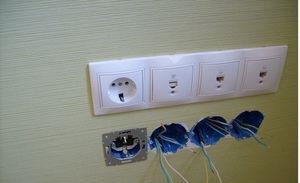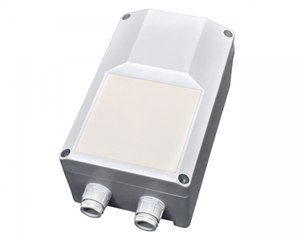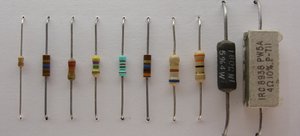
Resistors for LEDs: calculator for correct resistance calculation
Nowadays, LEDs are used in almost all areas of human activity. But, despite this, for most ordinary consumers it is completely unclear, thanks to what and what laws apply at work of light-emitting diodes. If such a person wants to arrange lighting with such devices, then many questions and finding solutions to problems are inevitable. And the main question will be - "What kind of thing is this - resistors, and why LEDs need them?»
What is a resistor and its purpose?
A resistor is one of the components of an electrical network, characterized by its passivity and at best, differs in the resistance of the electric current. That is, Ohm's law must be valid for such a device at any time.

The main purpose of the devices is the ability to vigorously resist electric current. Due to this quality, resistors are widely used in the need for artificial lighting, including the use of LEDs.
Why is it necessary to use resistors in the case of LED lighting?
Most consumers know, that an ordinary incandescent light bulb gives light when directly connected to any power supply. The light bulb can work for a long time and burns out only then, when the incandescent filament is excessively heated due to too high a voltage. In this case, the light bulb, in some way, implements the function of a resistor, because it is difficult to pass electricity through it, but the higher the voltage, the easier the current is able to overcome the resistance of the bulb. Of course, put in one row such a complex semiconductor part, both LED and ordinary incandescent light bulb are possible.
It is important to know, that an LED is such an electrical device, for the operation of which it is better not the current itself, and voltage, that is online. Example, if such a device is selected voltage 1,8 V, and comes to him 2, then, most likely, it will burn out - if you do not reduce the voltage to the desired level adjustment in time. That's why you need a resistor, which stabilizes the power supply, so that the voltage applied to them did not disable the device.
This is extremely important:
- to be determined, what type of resistor is required;
- determine the need to use an individual resistor for a specific device, what the calculation is for;
- consider the type of light source connection;
- планована кількість світлодіодів в освітлювальної системи.
Wiring diagrams

With a sequential arrangement of LEDs, when they are arranged one behind the other, usually one resistor is enough, якщо вдасться правильно розрахувати його опір. Це тим, що у електричної ланцюга є той самий струм, у кожному місці установки електричних приладів.
Але для паралельного з’єднання, для кожного світлодіода потрібен свій резистор. If you ignore this requirement, то всю напругу доведеться тягнути одному, так званому світлодіоду, що «обмежує», тобто тому, якому необхідна найменша напруга. Він занадто швидко вийде з ладу, при цьому напруга буде подано на наступний у ланцюгу прилад, який так само раптово перегорить. Такий поворот подій неприпустимий, so, у разі паралельного підключення якого-небудь числа світлодіодів потрібно використання такої кількості резисторів, the characteristics of which are selected by calculation.
Video: Паралельне підключення світлодіодів
Calculation of resistors for LEDs
With a proper understanding of the physics of the process, calculating the resistance and power of these devices can not be called an impossible task, with which the average person can not cope. Для розрахунку необхідного опору резисторів потрібно обов’язково врахувати наступні моменти:
- special marking, present on devices, зазвичай показує не потрібну напругу живлення, а напругу, що вибирається світлодіодом для своєї роботи, that is, the voltage drop. Це числове значення використовується для розрахунку визначення мінімально необхідної напруги або для вибору резисторів живлення;
- чисельне значення напруги на резисторі визначається як різниця між напругою живлення світлодіода та напругою агрегату;
- magnitude, flowing through an electric current resistor, виходить розподілом залишкової напруги на пристрої на величину його опору;
- to calculate the required resistance, залишкову напругу слід розділити на необхідну безперебійну роботу системи величину струму.
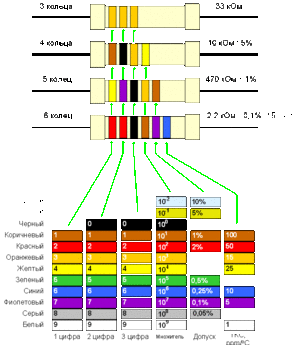
Video: Підбір резистора для світлодіода
Calculation of resistors using a special calculator
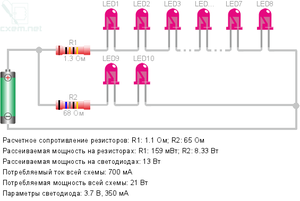
Usually, розрахунок опору таких пристроїв, required for any LED, здійснюється за допомогою спеціально призначеного для цього калькуляторів. Such calculators, зручні та високоефективні, не потрібно звідкись завантажувати та встановлювати – розрахувати резистор цілком можна і в онлайн-режимі.
Калькулятор розрахунку резисторів дозволяє з високою точністю визначити необхідну потужність та показник опору резистора, що встановлюється у світлодіодний ланцюг.
Для розрахунку необхідного опору необхідно у відповідні рядки онлайн-калькулятора внести:
- LED supply voltage;
- rated voltage of the LED;
- rated current.
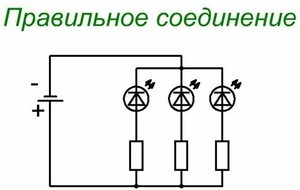
Further, потрібно вибрати схему з’єднання, used, as well as the required number of LEDs.
After pressing the corresponding button, the calculation is performed and the received calculation data is displayed on the monitor screen., with the help of which it is possible to organize artificial LED lighting in the future without much effort.
There is also some base in online calculators, що містить дані про світлодіоди та їх параметри. Надано можливість розрахунку:
- nominal value of the device;
- колірного маркування;
- current consumed by the circuit;
- розсіювання потужності.
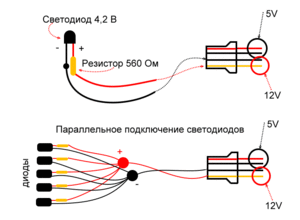
Man, яка не сильно знається на електриці та фізиці, in most cases will not be able to calculate the devices for LEDs. For this reason, проведення розрахунків за допомогою функціонального та зручного онлайн-калькулятора – неоціненна допомога для звичайних людей, які не володіють методикою розрахунків із застосуванням фізичних формул.
Most well-known manufacturers of LEDs and strips based on them, they also publish their own online calculator on their official websites, with which you can not only choose the right resistors and LEDs, але і обчислити параметри струмових приладів, що використовуються в різних режимах експлуатації при змінних значеннях струму, temperature, що подається напруги та ін.

